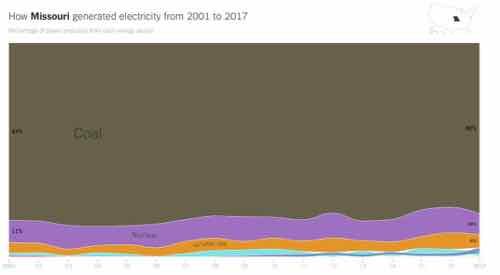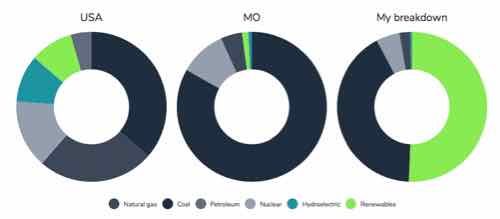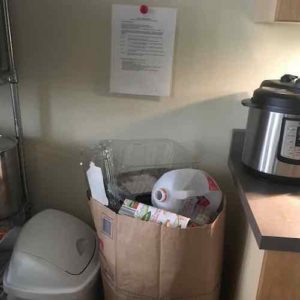We Switched to 50% Wind-Generated Electricity to Save Money & the Environment
In December the New York Times had an interesting article on how each state generates their electricity. No surprise, Missouri has been predominantly coal with nuclear secondary:
Missouri’s electricity generation mix hasn’t changed much in nearly two decades. Coal provided the vast majority of power generated in the state between 2001 and 2017, declining only slightly during that time as older coal-fired plants went offline or switched to burning natural gas.
Missouri will require utilities to get at least 15 percent of the electricity they sell from renewable sources by 2021, including a small amount from solar power. (New York Times)
I looked at other states, envious of some. Here’s a visual of Missouri’s electric sources going back to 2001.

Primarily coal, with nuclear & natural gas. Tiny amount of hydroelectric & wind. Other states do a better job of mixing in renewables, however, none of the states compare to countries like Germany — from earlier this month:
Renewable energy sources supplied nearly 65 percent of Germany’s electricity last week, with wind turbines alone responsible for 48.4 percent of power production nationwide, Clean Energy Wire reported. As a result, fossil fuel plants ran at a minimum output and nuclear facilities were shut down at night.
“These figures show that the envisaged goal [of the German government] of 65 percent renewables by 2030 is technically feasible,” Bruno Burger, a researcher with the solar research institute Fraunhofer ISE, said in a statement.
Lignite coal generated an average 24 percent of Germany’s electricity in 2018. Last week, that share was down to just 12 percent. Solar contributed 5.1 percent of Germany’s electricity last week, biomass 7.6 percent, and hydropower 3.5 percent. (Yale Environment 360)
For years I’ve wanted to have access to renewable energy sources, a few years ago my oldest brother installed solar panels on the roof of his California home. I’d spent 11 years in a loft where I couldn’t add solar or wind even if I could afford to do so, just signed a lease on an apartment where solar/wind wasn’t an option either.
This month half of our electricity was generated by the wind. How you ask? Renewable energy certificates.
Renewable energy certificates (RECs) represent the property rights to the environmental, social and other non-power attributes of renewable electricity generation. They are either kept by the renewable electricity generator (i.e. wind farm) or they become a part of the generators’ revenue and sold on the market. One megawatt-hour (MWh) represents one REC.
When you purchase RECs (or when we purchase them on your behalf), you are taking ownership of wind energy that’s being fed onto the grid. Once energy reaches the grid, it mixes together with the energy from coal and hydroelectric plants, solar farms, landfill gas, etc.
Utility companies then pull indistinguishable electrons off the grid and deliver them to homes and businesses. It is impossible to determine where the electrons came from – all consumers can do is ensure that wind energy is being matched through the purchase of RECs.
Wind farms rely on the revenue from RECs to offer their energy at a price that is competitive against fossil fuels. Anybody who says they’re using renewable energy – even big companies like Google – are purchasing both physical electrons from the grid and RECs.
By purchasing RECs, you’re increasing the demand for clean energy – which expands access and availability, helps the environment, and reduces our reliance on fossil fuels – without having to install and maintain your own equipment. (Arcadia Power)
Here’s a video explanation of the above:
You’re probably thinking these RECs are expensive to purchase. Well, we got our first bill yesterday — we saved $5! Plus, we can pay via credit card instead of bank withdrawal, so we’ll get cash back on our credit card statement. It’s free to sign up.


We still have an Ameren Missouri account, that’s who we use to get our energy from the grid. However, our bill goes to Arcadia Power, then they bill us & pay Ameren. After we’ve been in our apartment a year we’ll consider paying 1.5¢ extra per kWh to go to 100% wind.
For full disclosure, the link about to Arcadia Power is a referral link. They have working relationships with power companies nationwide, not just Ameren Missouri. Click here to find out more.
Further reading, just please use my referral link if you sign up:
Feels good to be able to support renewable energy sources without costing more money.
— Steve Patterson



